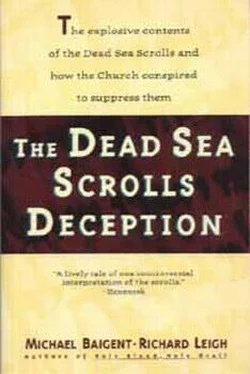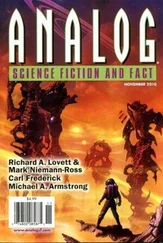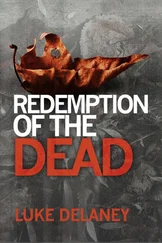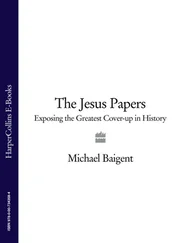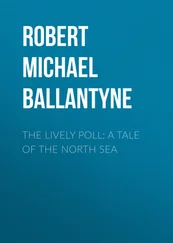A telephone call was made to Jerusalem and some sort of permission was obtained. The Jordanian engineer then produced a bunch of keys and proceeded to open the two chests. Inside, there were literally hundreds of thin cardboard sheets, each holding (attached by adhesive tape!) a dozen or so fragments of ancient parchment and/or papyrus. The fragments obviously spanned a considerable period of time, derived from a number of diverse sources and had been inscribed in several different languages — Aramaic, for example, Hebrew, Greek and Arabic. As might be expected of so eclectic and haphazard an assemblage, not everything was of value. Many of the fragments proved subsequently to be worthless — receipts and documents pertaining to ancient commercial transactions that might have been ferreted out of some archaic rubbish tip. But there were others as well.
The collection had come to London through the clandestine scroll market active in Jerusalem and Bethlehem during the 1950s and 1960s, and had been brought out of Israel during, or shortly after, the 1967 war. It was now supposedly being offered for sale to a certain unnamed European government, for an alleged price of £3 million. Baigent was asked to make a selection of photographs, to be displayed as samples of what was available. He took approximately a hundred photographs. But there were hundreds of sheets and, altogether, upwards of two thousand fragments, most of them relatively large.
In the dozen or so years since this incident, we have heard nothing further about the collection. If a sale was indeed negotiated, it was done so quietly, with no public announcement of any kind. Alternatively, the entire collection may still be sequestered in its London bank, or in some other similar depository elsewhere, or amongst the treasures of some private dealer.
Transactions such as the one to which we’d been peripherally privy were not, we subsequently learned, at all uncommon. During the course of the next decade, our research was to bring us into contact with an intricate network of antique dealers and collectors engaged in subterranean scroll traffic. This network is international and deals on a scale comparable to that of networks trafficking in paintings or gems. Hundreds of thousands of pounds can be produced on virtually immediate notice and be transferred on the basis of a handshake.
Two factors have conducted to the dissemination of the underground scroll market. One was the action of Yadin and the Israeli military in the immediate aftermath of the 1967 war, when the dealer known as Kando was held for interrogation and forced to divulge the existence of the ‘Temple Scroll’. Not surprisingly, this action upset the existing ‘truce’ and fostered a profound mistrust between Israeli and Arab dealers. As a result, much material found by the Bedouin, which would ordinarily have passed into Israeli hands, now finds its way illegally to Amman or Damascus or even further afield. From there, it passes to the West via such routes as Turkey or the Lebanon.
A second spur to the subterranean scroll market was a law instituted under the auspices of UNESCO, according to which any antiquities smuggled out of a country must be returned to their point of origin. This law was made retroactive. In consequence, individuals who had invested large sums in scroll material, or hoped to obtain large sums for scroll material, could not afford to make their holdings public. In effect, the law drove the clandestine traffic in scrolls even further underground — and, of course, caused a dramatic increase in prices.
How does the underground scroll trade operate? Much of it is controlled by certain families well known in the antique trade, who supply many of the legal antiquities on sale in Israel and abroad. During the course of the last half-century, these families have established their own intelligence networks, which maintain close contacts with the Bedouin and keep abreast of all rumours, whispers, legends and reported discoveries of antiquarian interest. When a potentially fruitful site is located, the land will be rented for a year and a large black Bedouin tent — ostensibly a domicile — will be erected. At night, excavations will be conducted under the tent. When all antiquities of value have been removed, the tent will be dismantled and its occupants will move on. A similar process occurs in towns, and particularly in Jerusalem, which has proved especially fertile territory. Sites will be rented for short periods or, if necessary, purchased. If a house does not already exist, one will be constructed. The occupants will then excavate downwards from the cellar to bedrock.
Through such procedures as these, much scroll material has found its way into the hands of private collectors and investors. This material entirely circumvents the world of ‘official’ archaeology and biblical scholarship. Indeed, the world of ‘official’ archaeology and biblical scholarship often does not even realise it exists. Unknown to the academics, there is at present a substantial quantity of Qumran and related material in the hands of collectors or for sale. We ourselves know of numerous fragments. We know of a well-preserved copy of one Qumran text, called the ‘Book of Jubilees’. We know of a handful of letters by Simeon bar Kochba. And there are substantial grounds for believing that other documents — documents of a much more explosive nature, utterly unique and undreamed of by the world of scholarship — also exist.
In the course of the next few years, major developments can be expected from any or all of three distinct quarters. The most obvious of these, needless to say, is the Qumran material itself. Now that the entire corpus of this material is readily accessible, independent scholars, without preconceptions, without axes to grind and vested interests to protect, can get to work. The international team’s ‘orthodoxy of interpretation’ has already begun to come under attack; and as this book has demonstrated, the supposed archaeological and palaeographical evidence with which they support their position will not withstand close scrutiny. In consequence, we can expect a radical revision of the process whereby dates have been assigned to a number of particularly important texts. As a result, new contexts and interpretations will emerge for already familiar material. And new material will emerge in perspectives that would have been cursorily and high-handedly dismissed a few years ago.
At the same time, there is also the possibility, enhanced by each new archaeological expedition Eisenman and his colleagues undertake to Qumran and the shores of the Dead Sea, that wholly new material may come to light. This possibility will be further enhanced — now that the Israeli government has granted permission for its use — by deployment of the ‘Subsurface Interface Radar’ system.
Finally, there is the clandestine scroll market, which may at any moment cough up something of unprecedented consequence — something hitherto kept secret, at last released into public domain. As we have said, such material exists. The question is simply if and when those who hold it decide it can be divulged.
Whatever the quarter or quarters from which new material might issue, fresh and, in some cases, very major revelations are bound to be forthcoming. As this occurs, we can expect ever more light to be shed on biblical history, on the character of ancient Judaism, on the origins of both Christianity and Islam. One should not, of course, expect a disclosure of such magnitude as to ‘topple the Church’, or anything as apocalyptic as that. The Church today, after all, is less a religious than a social, cultural, political and economic institution. Its stability and security rest on factors quite remote from the creed, the doctrine and the dogma it promulgates. But some people, at any rate, may be prompted to wonder whether the Church — an institution so demonstrably lax, biased and unreliable in its own scholarship, its own version of its history and origins – should necessarily be deemed reliable and authoritative in its approach to such urgent contemporary matters as overpopulation, birth control, the status of women and the celibacy of the clergy.
Читать дальше
